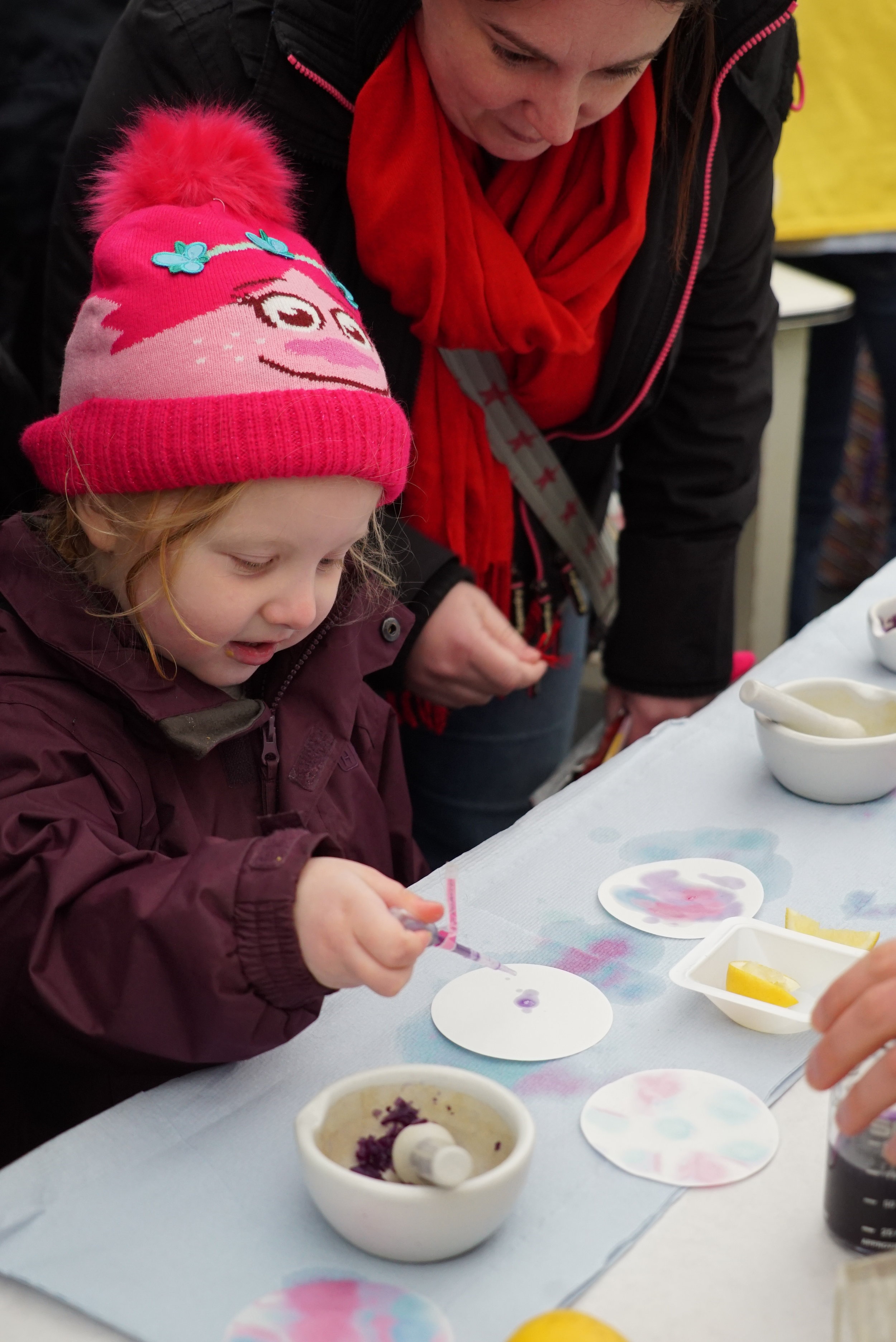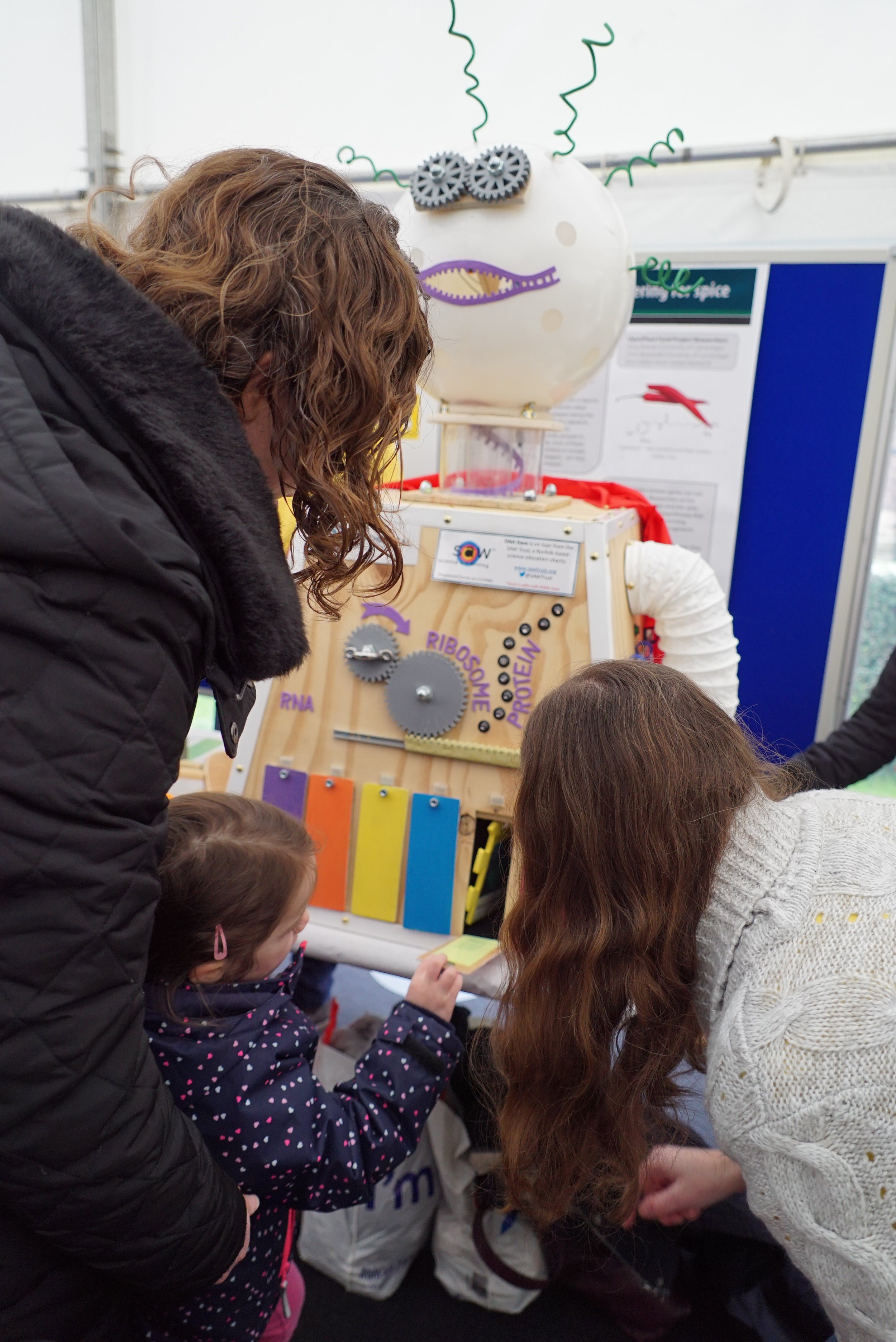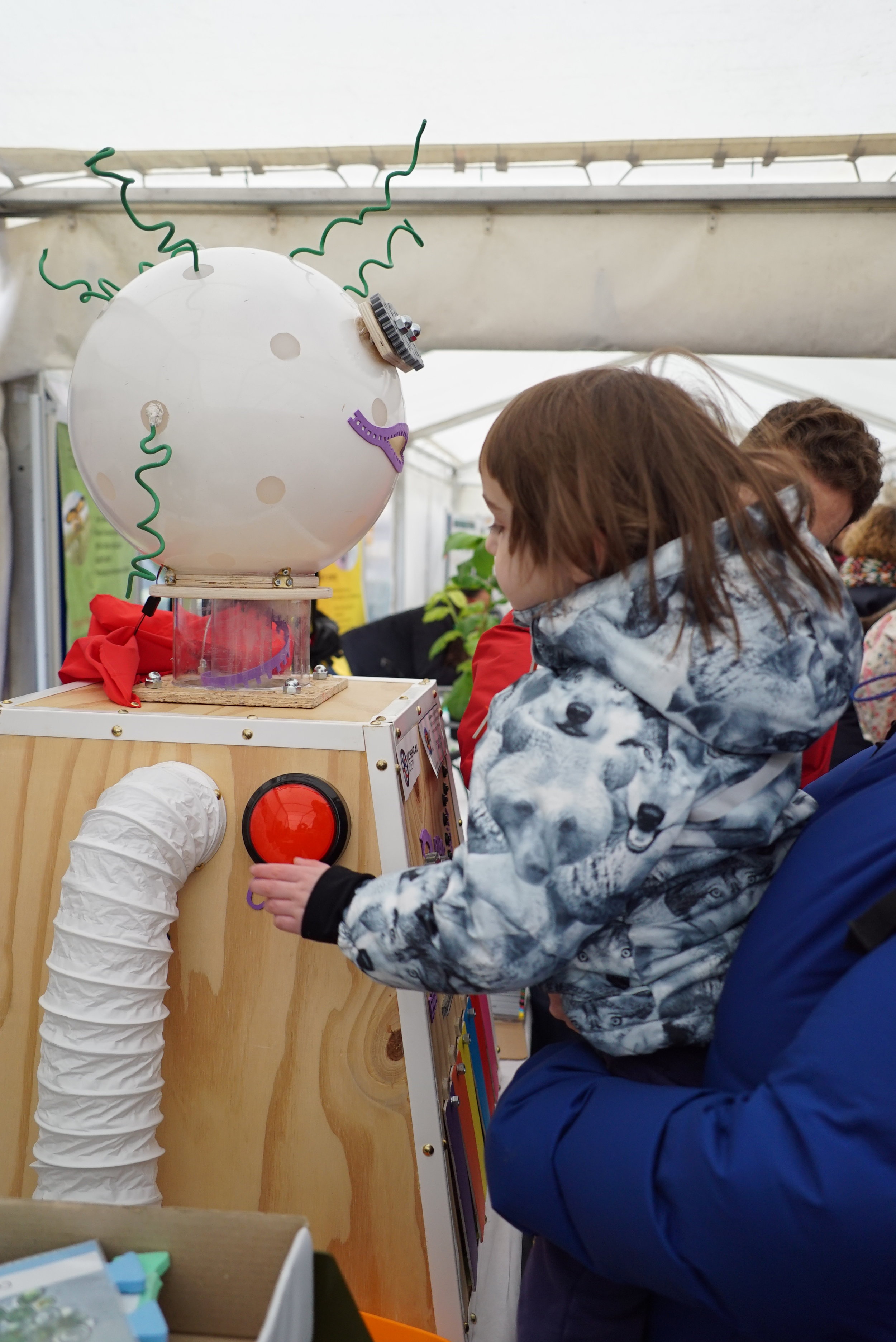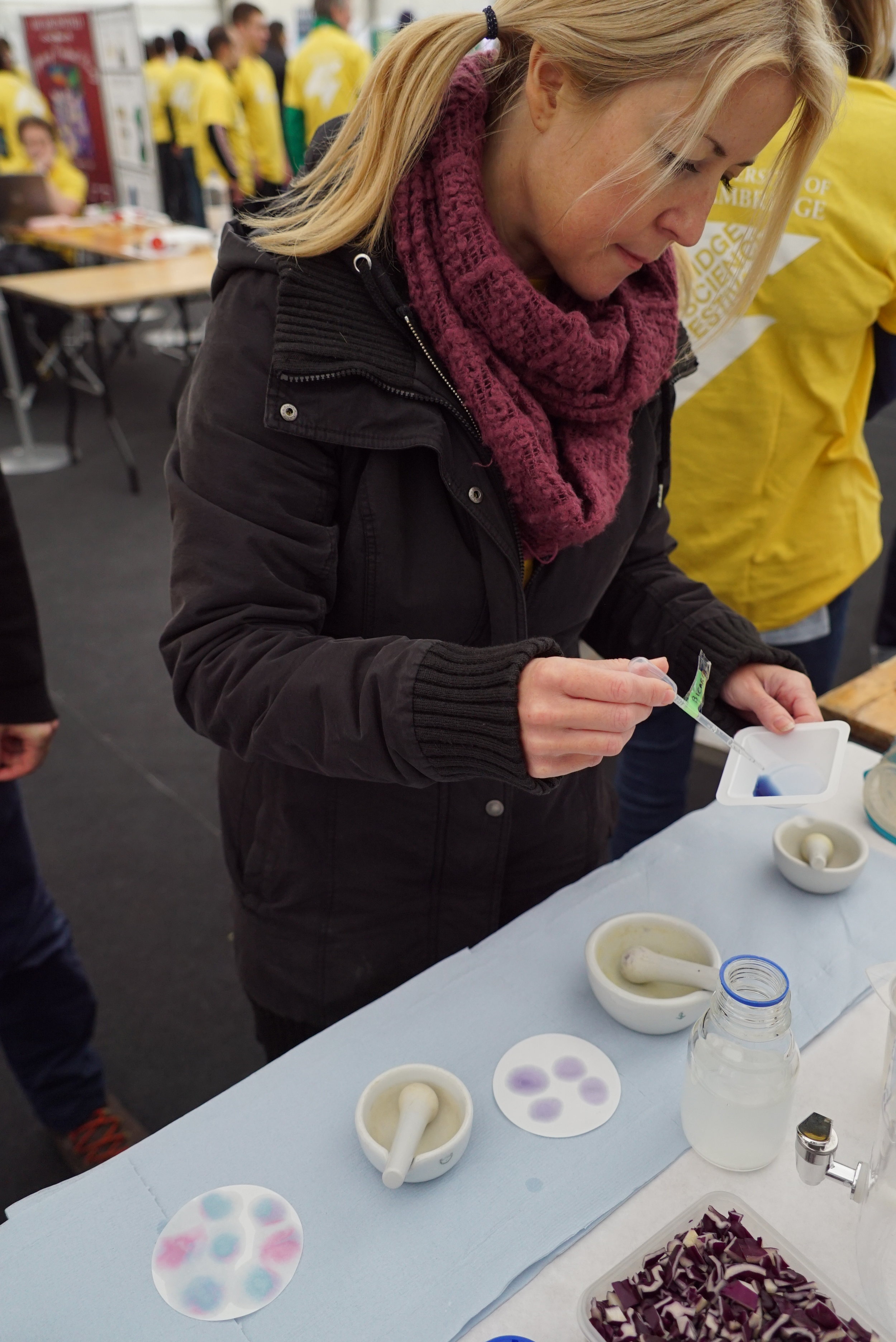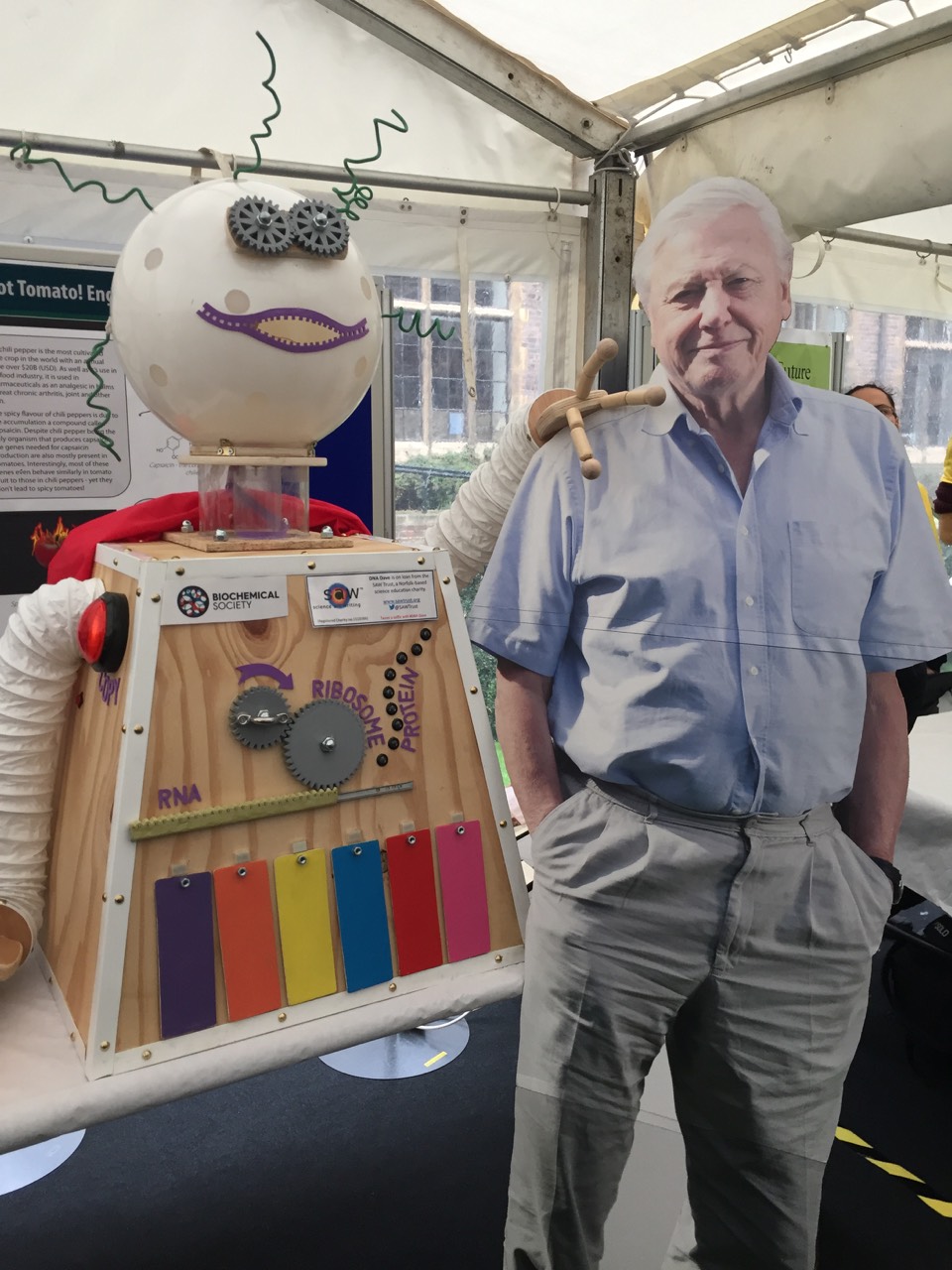The morning shift: Some of the Cambridge Science Festival 2018 team ready for doors open.
For the third year in a row, OpenPlant teamed up with the SAW Trust and Cambridge Synthetic Biology SRI to deliver a variety of activities on our interactive stand at the Cambridge Science Festival.
While braving the icy ‘pest from the west’ we explored some of the natural products made by plants with those who dared to venture out in the chilly weather. In keeping with this year’s festival theme ‘making sense of our world’, our ‘Synbio and the senses’ stand enabled participants to extract their own plant pigment, learn how plants make proteins and meet the one and only DNA Dave!
Extracting anthocyanin from red cabbage at the Cambridge Science Festival
The main activity of the stall involved visitors extracting the anthocyanin pigments from red cabbage, getting hands on with a natural pigment and investigating its sensitivity to pH levels. Children and adults alike, seemed to have great fun pipetting out their cabbage juice, acid (lemon juice) and alkaline (bicarbonate of soda solution) onto discs of filter paper to create their own artworks.
Visitors were excited to take home a worksheet explaining the science behind the pigments, and giving instructions for doing their own extractions and experiments at home. You can find the worksheet here.
Colour Bio-factories - using genetic engineering to boost existing pathways within plants to produce natural pigments.
In addition to the pigment extraction, visitors could learn about how researchers in Cathie Martins’ lab at the John Innes Centre are now producing these anthocyanin pigments in plants, using genetic engineering to boost a native pathway. At present there is only one natural blue pigment that is available for food colouring, which is produced from an alga called spirulina. However this blue is not very strong or stable in colour. Therefore, most blue food colourants are chemically produced synthetic compounds. The research conducted by Dr Ingo Appelhagen in the Martin lab is enabling the discovery of new, more stable, anthocyanins found in nature and the use of plant cell cultures to produce these more stable forms in larger amounts so that they could be used as non-synthetic colourings. They can generate a range of colours, including bright blues.
Visitors were also able to have a go at putting together their own synthetic biology plant system with the use of an interactive jigsaw game in which they chose a plant species to work with, a site or organ of the plant where they could make something happen, and a signal that would cause it to happen. To complete the game, they could then learn how proteins are made from the instructions in DNA with the help of DNA Dave! DNA Dave is a robot whose mechanics describe the processes of “transcription” and “translation” through which DNA is copied, then read and translated into a protein. As with previous events, DNA Dave was an absolute hit with all the visitors, including his namesake – Sir David Attenborough! Participants were even given the chance to design their own protein that could be used by DNA Dave.
A young visitor to the Cambridge Science Festival designs her own protein.
DNA Dave helps to explain the production of proteins.
With visitor numbers reaching 1600 in our marquee alone, the day was a great success with lots of enthusiastic individuals - if a little nippy! A big thank you to all our volunteers from the University of Cambridge and the John Innes Centre, Norwich, who helped on the day and did a great job!






